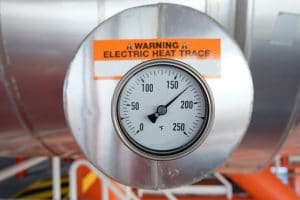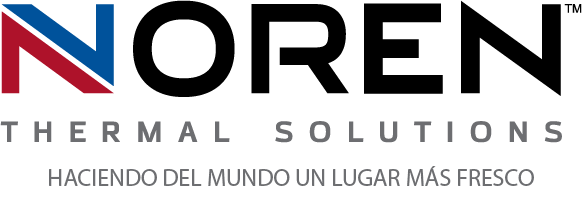 When it comes to high-performance electrical thermal management, heat exchangers that provide efficient, ambient cooling are often more than enough to prevent electrical overheating. Despite using natural methods to transfer heat, they can often offer cooling solutions that are just as powerful and usually more efficient than older solutions, such as HVAC equipment. The one thing ambient heat exchangers can’t do, though, is cool applications to below the ambient temperatures outside of electrical enclosures. However, for applications that require it, heat exchangers can be designed to achieve below-ambient cooling to help even more companies enjoy more efficient and affordable thermal management.
When it comes to high-performance electrical thermal management, heat exchangers that provide efficient, ambient cooling are often more than enough to prevent electrical overheating. Despite using natural methods to transfer heat, they can often offer cooling solutions that are just as powerful and usually more efficient than older solutions, such as HVAC equipment. The one thing ambient heat exchangers can’t do, though, is cool applications to below the ambient temperatures outside of electrical enclosures. However, for applications that require it, heat exchangers can be designed to achieve below-ambient cooling to help even more companies enjoy more efficient and affordable thermal management.
The need for below-ambient cooling
There are many reasons why some modern applications specifically require below-ambient cooling. For example, some of them operate under extremely hot conditions where the ambient temperatures outside of the enclosures are higher than the system’s maximum operating temperatures. While ambient heat exchangers have long been a preferred solution for more routine application’s, many companies still rely on more cumbersome solutions due to their need for below-ambient cooling. Now, however, they can achieve the same high-performance capabilities and efficiency thanks to specially designed below-ambient heat exchangers.
How heat exchangers offer high-performance cooling
The basics of a heat exchanger’s function are the ways in which it transfers electrical waste heat rather than trying to overcome it with chilled air. Inside of a heat exchanger, an eco-friendly cooling fluid flows through a loop, absorbing waste heat as the components inside of an electrical enclosure generate it. The fluid then transfers the heat somewhere it can be dissipated safely, such as a heat sink or other heat depository, before circulating back to continue absorbing and transferring heat continuously. In a below-ambient heat exchanger, the fluid can be chilled to the appropriate temperature to ensure that the enclosure is properly cooled.
Some of the benefits of below-ambient heat transfer
When companies are able to implement heat exchangers for their below-ambient electrical cooling needs, they can enjoy several significant benefits for a much wider range of applications. For instance, the ability to consistently and reliably cool electrical enclosures without the need for HVAC equipment means companies can maintain optimal efficiency at minimal costs. With specialized heat exchangers, those companies can extend those benefits to applications that require below-ambient cooling, as well.
For more information about how to create below-ambient cooling with heat exchangers instead of HVAC, call Noren Thermal Solutions in Taylor, TX, at 866-936-6736.







